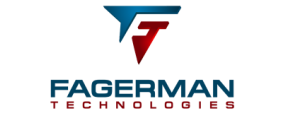Frequently asked questions
How much data can you store?
What file formats do you support?
Do you have an indoor SLAM solution?
On a UAV how do you take care of vibration?
Do you use an INS in your system?
How do you compute the trajectory?
Can you use control points?
What accuracy can we expect?
It depends upon several factors:
Why so many lasers?
Why so many INS selections?
What about using RTK or Real Time Kinetic?
What is PP or Post Processing?
What is a base station?
How fast can you travel during collection?
What about rain, wet roads, snow, dust?
Do I need two antennas?
What point density can you collect per square meter?
Can I mount the system backwards?
Do I have to buy a wheel meter?
How often do I need to calibrate or maintenance ScanLook?
- For the Velodyne and Quanergy scanners - MORE THAN YOU CAN SCAN IN A WEEK. All on removable media for immediate use.
- For the FARO, currently it is limited by your laptop. It collects 10GB/hour.
- For the Ladybug, it depends upon the frames per second. Generally about 45GB/hour to your laptop.
What file formats do you support?
- LAS, LAZ, e57, a variety of text.
Do you have an indoor SLAM solution?
- Not at this time.
On a UAV how do you take care of vibration?
- The INS does this combined with our software.
Do you use an INS in your system?
- Absolutely.
- It is integral to our design.
- We use a variety of INS packages.
How do you compute the trajectory?
- The INS either computes it directly, it is smoothed in our post processing, or through use of NovAtel Inertial Explorer.
Can you use control points?
- Yes, we have a very nice tool built-in to our system.
- We also support coordinate update information to revise the trajectory.
What accuracy can we expect?
It depends upon several factors:
- Laser scanner - ranging accuracy and precision along with angular measurement.
- INS - Orientation measurement and GNSS supported (L1, L1/L2, GPS, full GNSS).
- Software - Real-time INS solution with filtering or post processed trajectory estimation.
- All of our INS packages generate an eye-appealing point cloud.
- Registration and geo-referencing are highly dependent upon GNSS and control points.
- Learn more here.
Why so many lasers?
- We feel the optimum system is a single Velodyne and one Z+F scanner (or one FARO scanner). The Velodyne is super for assets and minimum shadowing and the other scanners are suited towards high accuracy, hard surface, thin point clouds.
- However, you can have 1 Velodyne and 2 Z+F scanners, etc.
Why so many INS selections?
- Land Rover, BMW, Honda, Toyota, GMC, Ford - Its the same question.
- People have brand preference. We want to bring as many options to the users as possible. Their choice will depend upon past experience, geography, and purpose.
What about using RTK or Real Time Kinetic?
- We frowned on this option for some time. However, there are certain applications where this is a reasonable solution. In forensics and accident scene reconstruction, military, and mining this may be well suited. See the Learn tab for problems using RTK for mobile mapping.
What is PP or Post Processing?
- This is generally in reference to the trajectory solution. The alternative is the RTK solution. PP allows for much more control and refinement of the trajectory and consequently better point clouds. It involves NovAtel's Inertial Explorer (or equivalent), which is fairly pricey (but worth it), and requires some training. Generally the better educated you are in mapping, cartography, surveying and geodesy, the better your results will be. In most cases it is not difficult.
What is a base station?
- A base station is a GNSS ground station generally placed on a known point. Usually a base station will collect GPS and GLONASS (and maybe others) satellite signals during the scanning session. This is combined with the mobile satellite data connected to the scanner to generate a trajectory. In RTK mode this is usually a radio system with communication being done via modems over relatively short distances. In PP mode there is no communication between systems and everything is done in a post process step. PP can also use local CORS stations. RTK can utilize a local VRS or Omnistar solution.
How fast can you travel during collection?
- You cannot out run the INS even on a race car. As for the scanners, you cannot out run them either. Obviously, the faster you go, the greater the scanline separation will be. At 50mph with 100Hz mirror rate this puts each scanline at about 9 inches (23 cm). Trajectories at driving speed tend to be very smooth and predictable - this is good. The Velodyne mounted at 45 degrees and about 10 feet above the ground at 75mph provided several hundred points on a small parked car - enough to clearly identify the type of vehicle (points inside and out).
What about rain, wet roads, snow, dust?
- Rain and expensive electronics generally don't mix well. Each scanner has different IP ratings. The Velodyne is the most durable of those we currently service. Snoopy can be left in the rain - but he would rather be under cover. Wet roads are essentially invisible to laser scanners. Snow and dust are very visible and can cause what appears to be a lot of noise in the scan data.
Do I need two antennas?
- To our understanding, you only need two antennas in a few situations. The first would be on a slow sea going vessel where you cannot go fast enough to do a good kinematic alignment and you cannot sit perfectly still for a static alignment. This could apply to a UAV as well. Another situation would be if you purchased a low-end system that kept its heading by using dual antennas (which is perfectly fine). Lastly, you would need dual antennas when you have a really good salesman that insists you buy two. :-)
What point density can you collect per square meter?
- This is a tough question. While it can be derived from manufactured specifications, it is often easier to collect real data in various conditions to get the answer you really need. Obviously the scanner data rate (points per second) contributes to this greatly. Vehicle speed is also an important factor. Some scanners only collect at 36 to 72 kHz with slow mirror rates (20 Hz).
Can I mount the system backwards?
- You can definitely mount the system backwards. Our first sale into Australia did this very thing to bring the scanning to the front of the vehicle to avoid scanning dust. A great deployment of our system.
- Not only backwards but upside, tilted, etc.
Do I have to buy a wheel meter?
- No, you do not have to buy a wheel meter. You can if you wish to do so. We think it's money better spent for you to do some scans first without the DMI and then test one if you think you need to improve your results. See if you can find a manufacturer who will loan you one for testing. This is very much a function of the types of areas you scan, the INS you use, and the results you require.
How often do I need to calibrate or maintenance ScanLook?
- ScanLook itself does not require any re-calibration or maintenance. However, your scanner components may. If you need to send your scanner (FARO, etc.) in for maintenance then you will definitely need a new boresight computed. So you only need to do this as often as you do maintenance on your scanner head.



